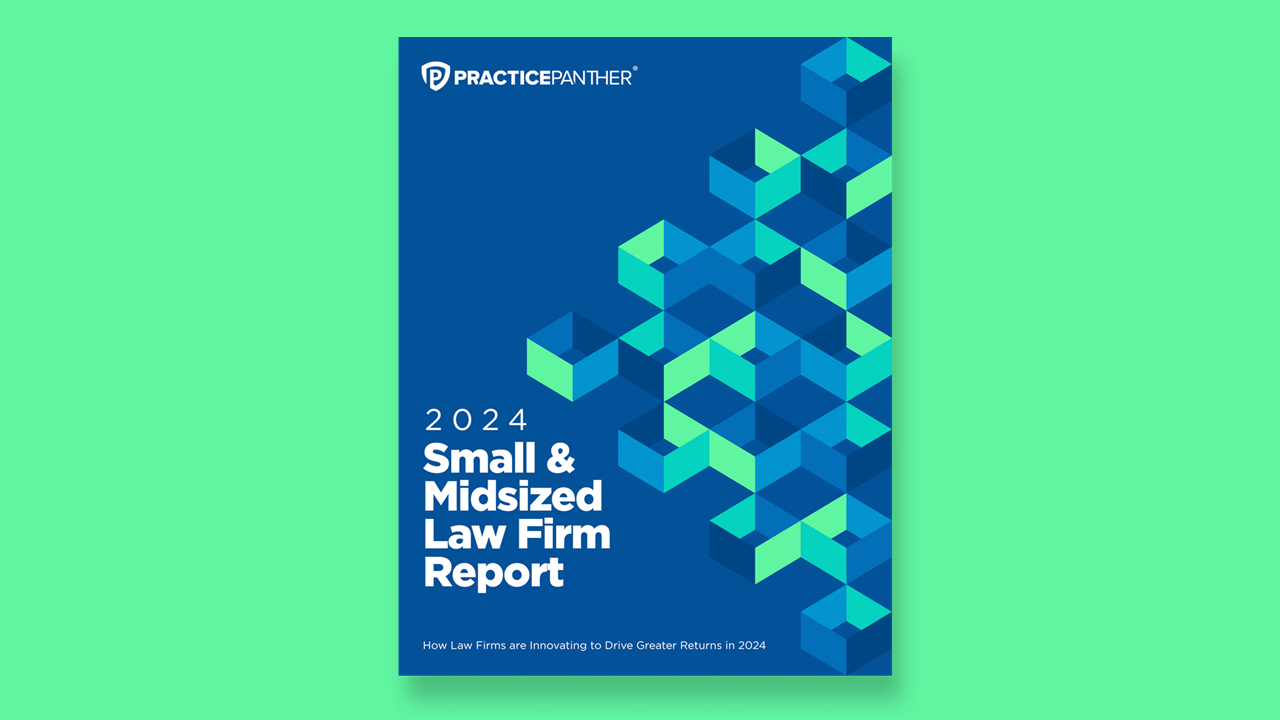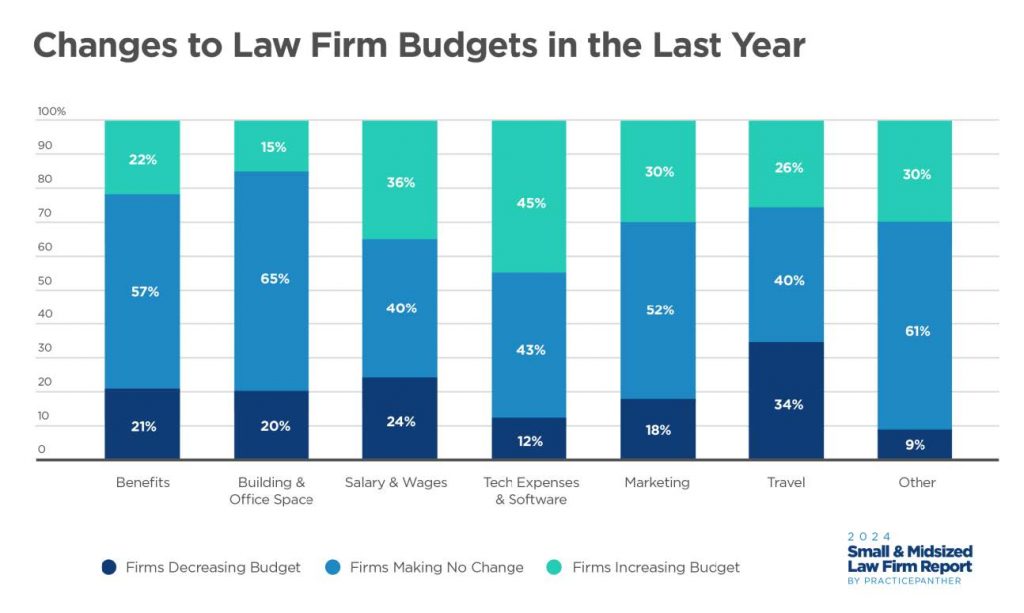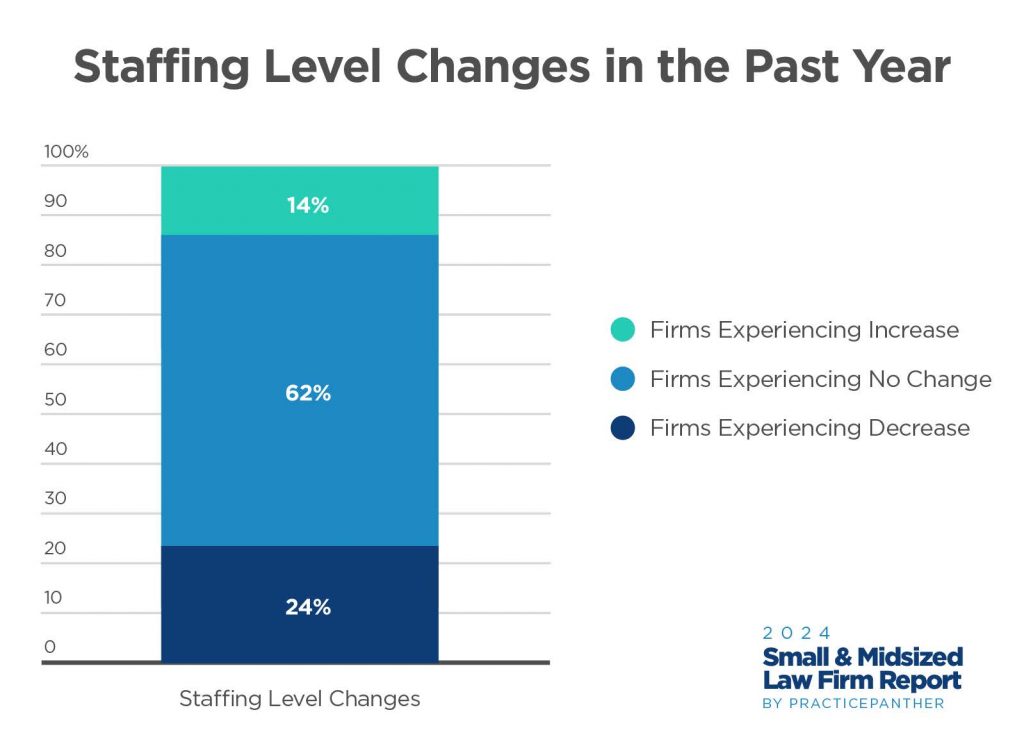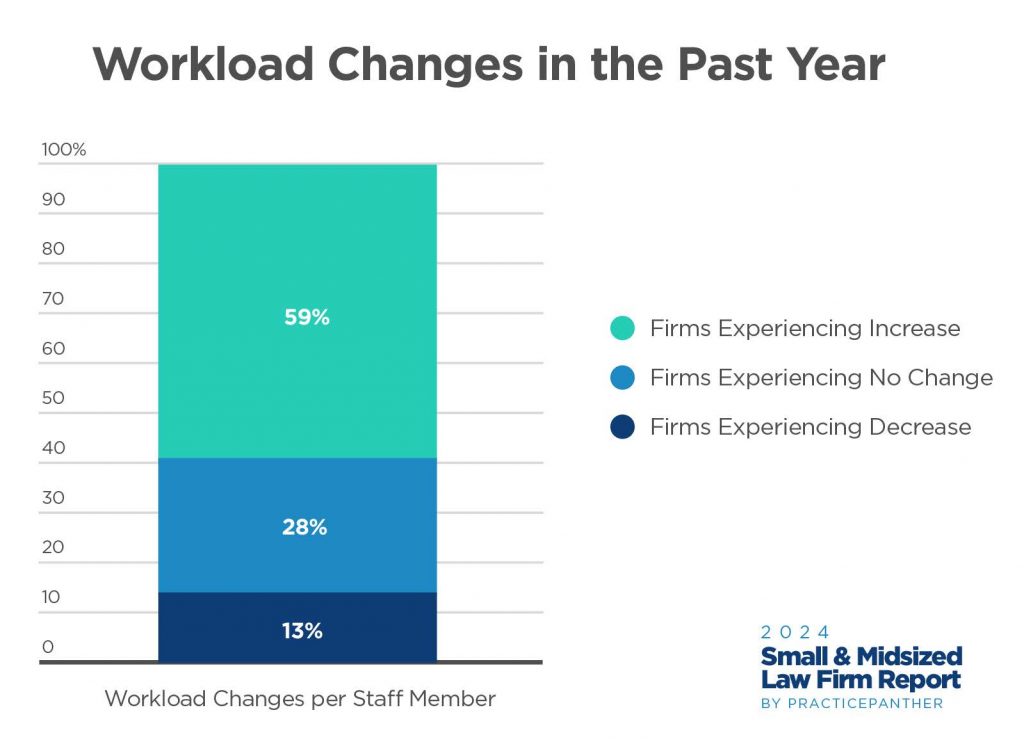Even amid a highly variable and possibly decelerating U.S. economy, smaller law firms are showing greater optimism about their futures, as evidenced by the face that they are either maintaining or increasing their 2023 budgets across most key categories, according to a survey report released today.
More than 75% of firms are either maintaining their budgets or increasing their spending this year in areas such as technology, salaries and marketing, the report says.
These are among the findings of the 2024 Small & Mid-sized Law Firm Report, published today by the law practice management company PracticePanther based on data collected during July and August 2023 from firms across the spectrum of practice areas.
The report is based on responses to a survey from legal professionals at small and midsized law firms, as well as on aggregated and anonymized data from users of the PracticePanther platform.
“Law firms seem to be adopting a growth mindset rather than hunkering down for an economic storm,” the report says. “Many of these firms are actually investing more in their practices instead of scaling back.”
But, as is discussed below, the report also finds that a majority of law firms are grappling with multiple challenges resulting from increased workloads driven by greater client demands, stagnant staffing levels, a challenging labor market, and increasing market competition.
Recognizing these challenges, the report concludes with a playbook of recommendations for how firms can achieve sustainable growth and the technology tools that can help them do that.
Increased Spending on Technology
Among small and medium-sized firms, increases in spending are greatest in the area of technology and software, with 45% of firms (and 50% of solos) indicating that they are increasing their technology budgets, and 43% maintaining their prior year’s level. Only 12% of firms are decreasing their technology spending.
“The notion that ‘technology matters’ has transformed from an emerging idea to an operational cornerstone,” the report says. “Adopting innovative technology is now a strategic choice that defines how these firms function, serve clients, and compete.”
Where are those tech dollars going? The report finds that law firms’ technology spending is focused on tools that will help them in three critical areas:
- Achieving long-term efficiency. Firms are investing in comprehensive platforms that can streamline operations across the board, from client intake to document management.
- Enhancing client services. With clients demanding greater flexibility and responsiveness, firms are offering alternative methods for consultations and follow-ups, such as video conferencing, text messaging, and secure client portals.
- Improving firm finances. The report finds that firms are leaning into technology that allows them to better track billable hours, manage invoicing, and accept electronic payments.
While small and medium firms of all kinds are increasing technology spending, those in certain practice areas are spending even more, the report finds. Among family law firms, for example, 75% increased their technology spending, and among insurance defense firms, 83% increased their spending.
Further, firms plan to continue this spending into next year. Ninety percent of small and medium firms say they will increase or maintain their technology budgets in 2024.
“Solo practitioners, in particular, have expressed a high level of comfort in embracing new technology solutions to help drive their practice forward,” the report says. “Such an attitude sets them apart from their counterparts in large firms.”
Grappling with Workloads
Even in the face of this economic optimism, law firms are grappling to keep up with increasing workloads and a paradoxical decline in financial return on that work.
“The legal sector has changed — clients are demanding more transparency, personalized solutions, ongoing engagement, and more,” the survey says. “Consequently, firms aren’t just doing more work to serve their clients; they are doing different kinds of work, which is further affected by staffing limitations.”
Staffing is stagnant at small and midsized firms, the report finds, with 24% of firms seeing a drop in staffing and 62% seeing no change. Several factors contribute to this:
- Firms are struggling to find quality talent. Nearly half of firms report that the caliber of job applicants has noticeably declined in the past year.
- Firms are finding it difficult to find associates and support staff who have the experience to immediately contribute to the practice.
- The need to hire staff who are tech-savvy has made the hiring process more complex.
- Talent wars are forcing firms to pay higher salaries to retain staff.
Interestingly, generative AI is also proving to be an additional factor in staffing stagnation, as firms grapple with the uncertainty of how it will impact their practices. On one hand, many firms feel pressure to hire more staff, but they are also weighing that against the potential that generative AI could automate many routine tasks and therefore reduce staffing needs.
Increases in Workloads
All of this comes at a time when small and medium-sized law firms see stiffer competition than ever before and greater pressure to evolve their practices in order to remain competitive, the report finds.
“One critical factor in this competitive context is the changing expectations from clients, with 40% of firms expressing apprehensions about adapting to these evolving demands,” the report says.
This results in a paradox, according to the report: Although they are working more, many small and midsized firms face lower cash returns on staff hours.
From 2022 to 2023, several key performance indicators for these firms — including true utilization, billing realization, and collection rates — have seen a decline, reflecting a challenge among some firms to convert their increasing labor hours into commensurate increases in revenue, profits, and cash.
“This decline in true utilization rates is primarily due to increasing workloads affecting many law firms,” the report says. “Law firms who have not adopted an all-in-one practice management solution feel the bulk of this pain. With non-billable work piling higher than ever before, their staff’s true utilization rates is as low as half of their LPM-enabled counterparts.”
It is a problem that builds on itself, the report suggests. When firms are understaffed and overworked, they tend to pay less attention to collections.
“Understaffed firms facing massive workloads often see the finer points of their collection process begin to slip,” the report says. “This struggle is intensified during down economic times, which commonly lead to delays in collection.”
Of course, one way to address this is through electronic payments. “Firms leveraging ePayment processors observe a materially higher collection rate on average,” the report says.
Achieving Sustainable Growth
Amid both economic opportunities and challenges, there is great potential for growth among small and midsized firms, the report concludes. But it says that the firms that stand apart in their ability to thrive do so through two non-negotiable dimensions: market positioning and scalability.
“To truly excel in the long run, firms must effectively adapt to capture shifting market demand while possessing the internal efficiencies to retain and sustain growth.”
How do they do this? The report concludes with a point-by-point analysis — a playbook, if you will — of the methods used by top firms to drive success and the role of law practice management software in supporting those methods.
“In a period marked by a softening economy, evolving client expectations and challenges recruiting quality talent, law firm leaders find themselves at a pivotal crossroads.” said Mayowa Oyebadejo, vice president of marketing at PracticePanther. “Our 2024 Small & Midsized Law Firm Report shares tangible steps law firms are taking to improve firm operations, alleviate rising workloads and enhance profitability.”
In addition to those recommendations on how firms can drive success, there is much more data and analysis in the report than I’ve touched on here.
You can read it all yourself by downloading the full version here: 2024 Small & Midsized Law Firm Report.
 Robert Ambrogi Blog
Robert Ambrogi Blog


